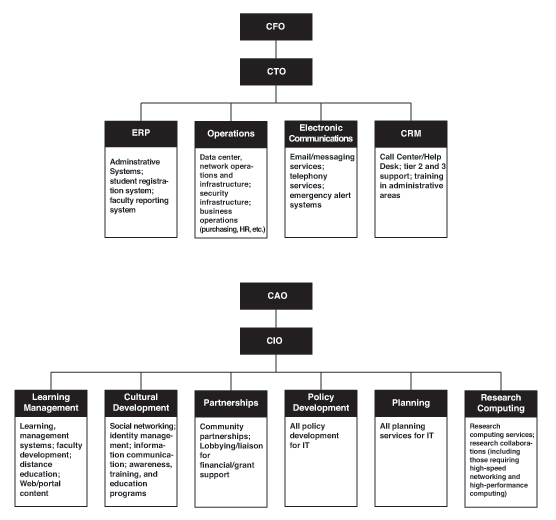Key Takeaways
- To align with the rest of the institution, IT departments should focus on supporting the core processes of teaching, learning, research, and public service.
- IT responsibilities mapped against readiness and affinity to the core fall into two categories: those supporting the business of IT, and those supporting the purpose of IT.
- Organizing IT along these lines, into its business and its purpose, allows serving the academic mission independently of business obligations.
A colleague recently handed me the September 2008 issue of Campus Technology and directed me to the short article “Cut to the Core.” In it, Adrian Sannier, the university technology officer at Arizona State University, describes IT in academe as less e-mail servers and Ethernet cables and more a world where teaching and learning are “core processes.” Everything else is context, says Sannier, and “it is the elimination of context that liberates the resources to do everything else.”
I, too, had come to the conclusion that we in the IT area of higher education are not here to passively support teaching, learning, research, and public service by providing IT infrastructure and hardware. We are here to actively drive teaching, learning, research, and public service by immersing ourselves in the education of our students. My professional raison d’être is to advance teaching and scholarship by contributing more intellectually and less technically to my university. I want to concentrate less on servers and wires and more on the content and information that is stored on these servers and traverses these wires. Sannier’s article confirmed my perspective.
Classification of Roles by Quadrant
After reading Sannier’s article, I began rethinking the fundamental role of IT in the academic enterprise. I looked over our IT department’s mission and vision statements, as well as our strategic directions and initiatives associated with those strategic directions. I did the same for the IT departments at our aspirant and peer institutions as well.
As I began listing and categorizing specific responsibilities of IT in the academic enterprise as indicated by this survey of IT departments, two major themes emerged:
- Readiness
- Affinity to the core
The campus expectation is that certain IT services will always be on, 24 hours a day, with little disruption of service (readiness). At the same time, the IT department is expected to provide services that contribute directly to the core mission of teaching and learning (affinity to the core).
In the process of correlating readiness with affinity to the core, I devised the grouping of IT roles shown in Figure 1.

Figure 1. Mapping IT Services to Readiness and Affinity to the Core
An interesting dichotomy emerges from these quadrants. On the left, quadrants 1 and 4 list services/roles generally related to the business of IT. On the right, quadrants 2 and 3 list services/roles that pertain more to the purpose of IT in the academic enterprise.
An Organizational View for IT
What if we organized IT along these lines, aligning the business and purpose of IT separately? For example:
- Put the IT services representing the business of IT in the hands of a chief technology officer reporting to the chief financial officer.
- Put the IT services representing the purpose of IT in the hands of a chief information officer reporting to the chief academic officer.
With this alignment, the business of IT can be run like a business. Cost savings will most surely result as resource allocation and sourcing for those resources become a part of the entire institution’s fiscal environment. Business decisions for IT can be made in the context of business decisions for the entire enterprise. IT goods and services become another commodity, benefiting from volume purchases and streamlined purchasing processes that are no different from other institutional purchases. And to conclude the win-win alignment scenario, separating the purpose of IT from the business of IT allows the academic mission to be served independently of the constraints of business obligations. Those who contribute technically have the opportunity to do so, concentrating on designing a cost-effective and efficient IT infrastructure that can fully support the needs of the institution. Those who contribute intellectually by delivering content and information that is processed, transmitted, and stored on this infrastructure are allowed to do so without concerning themselves with the business of IT. The context is not necessarily eliminated, just properly aligned.
So how do we go about the task of effecting this alignment? The conversations must begin at the top among open-minded senior administrators willing to view the function of IT according to these two distinct categories. A business case offered by the CFO compatible with a clearly defined vision of the academic purpose of IT articulated by the CAO will foster the collaboration necessary for the success of this cross-functional alignment. It will then be incumbent upon the president of the institution to present the overall case with attendant benefits to affected constituencies, including administrators and faculty.
This structure further refines the definitions of IT services and roles, separating the business of IT from the purpose of IT and allowing IT to best support the core responsibility of the institution: teaching and learning.

Figure 2. A Proposed Organizational Structure for the CTO and CIO
© 2009 Albert DeSimone, Jr. The text of this article is licensed under the Creative Commons Attribution-Noncommercial-No Derivative Works 3.0 license.
